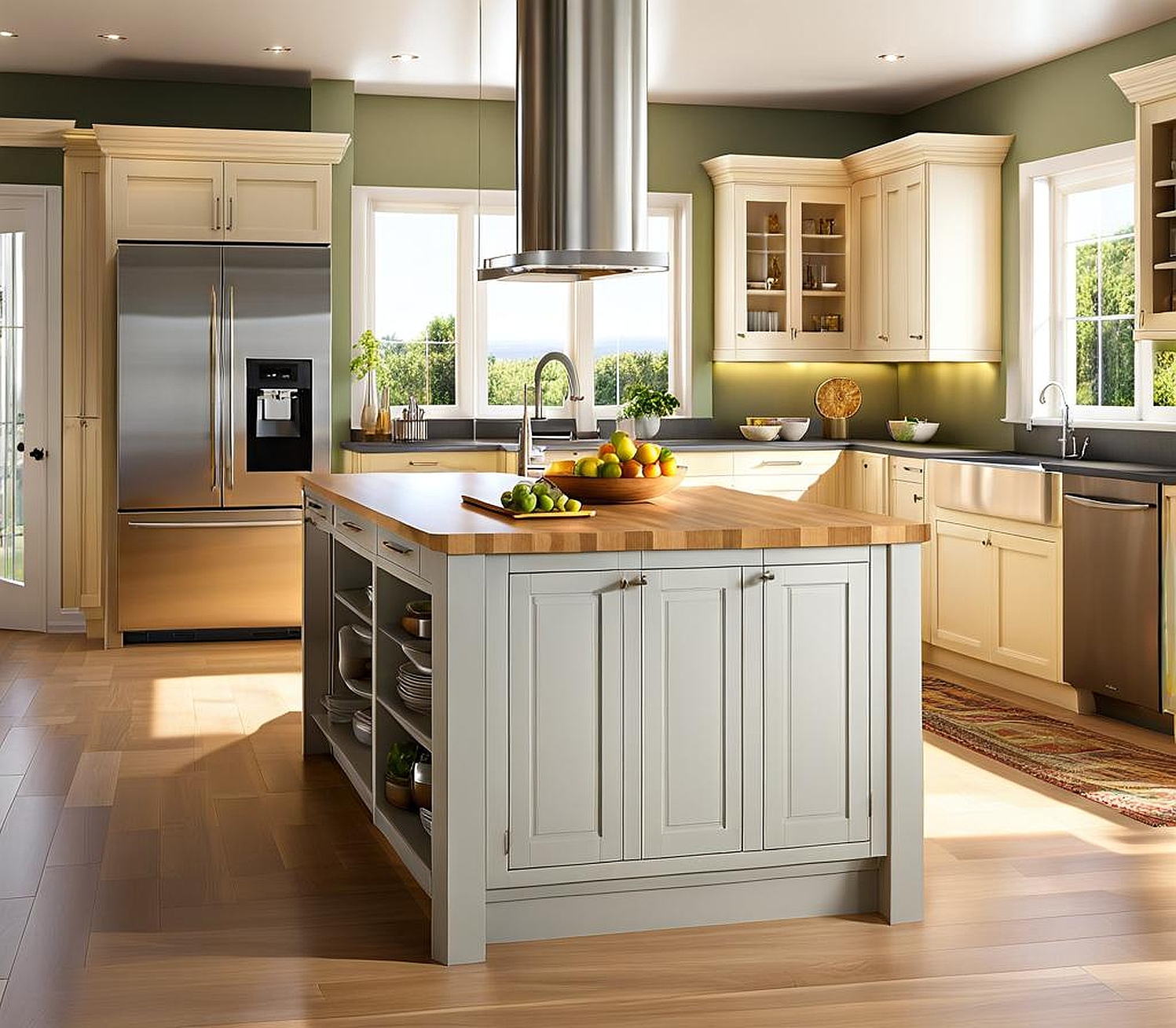The perfect balance between the island’s dimensions and the kitchen’s aesthetic appeal is a key factor. The standard kitchen island width plays a pivotal role in creating an inviting and practical cooking space, catering to diverse needs while ensuring seamless navigation. As an indispensable centerpiece, getting the measurements right is key to unlocking a harmonious and efficient kitchen layout.
Standard Kitchen Island Width: A Comprehensive Guide
When it comes to designing a dream kitchen, the island serves as a multifunctional hub, merging preparation areas, dining nooks, and storage solutions into one cohesive unit. Determining the ideal width is a crucial first step, as it sets the stage for the entire island’s purpose and flow. Generally, the standard kitchen island width ranges from 24 inches to 48 inches, with 36 inches being the most common sweet spot for residential kitchens.
However, these measurements are not set in stone. The optimal width is contingent on various factors, such as the overall kitchen size, the island’s intended use, and the desired traffic patterns. For instance, a compact galley kitchen may call for a narrower island to maintain a comfortable walkway, while a spacious open-concept layout could accommodate a grander 48-inch or wider structure.
Factors Influencing Kitchen Island Width
Achieving the perfect kitchen island width is a delicate balancing act, considering multiple elements that contribute to a cohesive and functional design. Here are some key factors to consider:
- Kitchen Size: The available floor space dictates the maximum width your island can occupy without compromising traffic flow or feeling cramped. Smaller kitchens typically require narrower islands, while larger spaces can accommodate wider ones.
- Intended Use: Determine whether your island will primarily serve as a prep area, dining spot, or both. Wider islands offer ample counter space for meal preparation and can accommodate seating, while narrower ones are better suited for supplementary tasks.
- Clearance: The National Kitchen and Bath Association (NKBA) recommends a minimum of 42 inches of clearance between the island and surrounding countertops or appliances. This ensures comfortable movement and easy access to cabinets and appliances.
- Seating Arrangements: If you plan to incorporate seating at the island, account for adequate knee space and overhang. A standard overhang of 12-15 inches provides ample room for chairs or stools.
By carefully considering these elements, you can strike the perfect balance between functionality and aesthetics, tailoring the island width to your unique needs and preferences.
Optimizing Kitchen Island Size for Functionality
Maximizing the island’s functionality is a top priority, and its size plays a crucial role in achieving this goal. Whether you desire a dedicated prep area, a casual dining spot, or a multifunctional hub, the right dimensions can transform your kitchen into a well-orchestrated workspace.
| Island Width | Ideal Use |
|---|---|
| 24 inches | Best suited for compact kitchens or as a supplementary work surface |
| 36 inches | Versatile option for residential kitchens, accommodating prep work and limited seating |
| 42-48 inches | Spacious surface for meal preparation, ample seating, and even storage options |
| 60 inches or wider | Luxurious centerpiece for large or commercial kitchens, accommodating multiple cooks and guests |
Remember, these measurements are merely guidelines. Customizing the island’s width to your specific needs and layout can truly elevate its functionality and transform your kitchen into a personalized haven.

As kitchen design continues to evolve, incorporating modern trends and innovative solutions, the island’s dimensions have become a focal point. Today’s homeowners seek multifunctional spaces that seamlessly blend form and function, and the island plays a pivotal role in achieving this balance. One noteworthy trend is the adoption of oversized or double islands, especially in open-concept layouts. These grand centerpieces not only provide ample workspace but also serve as striking design focal points. With widths ranging from 60 inches to over 100 inches, they offer the luxury of multiple prep zones, integrated seating, and even built-in appliances or cooktops.
On the other hand, compact urban living has given rise to the popularity of space-saving solutions, such as slim or mobile islands. These versatile units, often with widths around 24-30 inches, can be easily repositioned or tucked away when not in use, maximizing the available floor space.
Ultimately, the key to embracing contemporary kitchen design lies in harmonizing the island’s dimensions with the desired aesthetic and functional requirements. By staying attuned to the latest trends and tailoring the island’s width to your unique vision, you can create a kitchen that not only looks stunning but also elevates your culinary experiences.